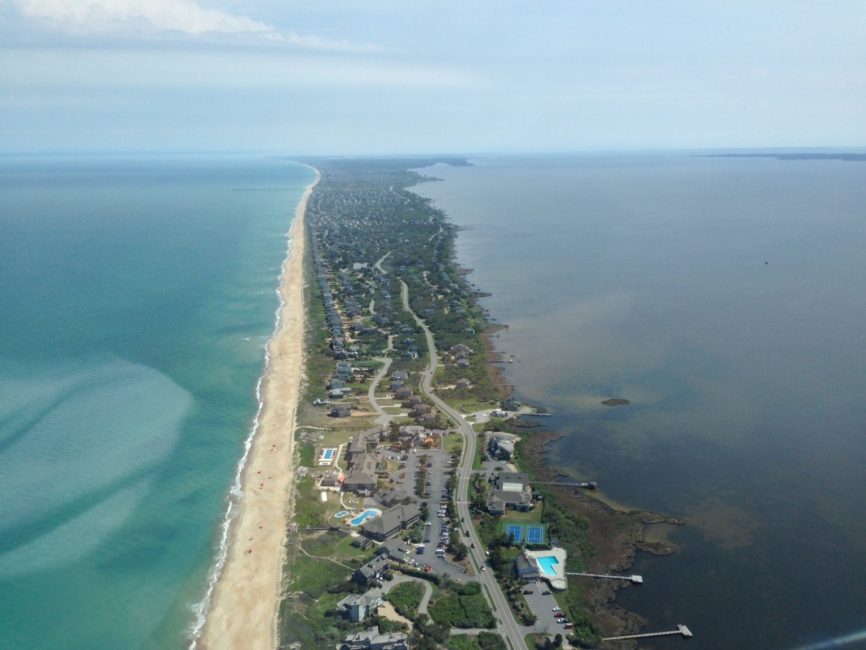
Now that the summer season is officially here and our roads, businesses and beach accesses are once again filled with out-of-state license plates, just about everyone who lives on the Outer Banks is exhaling a huge sigh of relief. This may seem contradictory to people who don’t live here; why look forward to slow moving highways and busy stores?
The answer is simple: living on the Outer Banks, the relationship between summer crowds and employment opportunities is a close one.
So in the interest of hospitality and giving our guests a more relaxing vacation, we have put together some helpful hints for using the Outer Banks transportation network.
Almost everything flows north and south, parallel to the coastline. Don’t head east unless you want to go swimming in the Atlantic, and only head west if you are interested in exploring Colington Island, which is almost exclusively residential, or Roanoke Island, which includes the picturesque towns of Manteo and Wanchese.
There are two main north to south highways running the length of the most populated section of the Outer Banks-an area that includes Kitty Hawk, Kill Devil Hills and Nags Head. The Bypass is the larger of the two, officially US 158 or Croatan Highway, but locals don’t refer to it as such. The Beach Road is NC 12 or Virginia Dare Trail, but again, the official names are rarely used.
The Bypass was at one time an actual bypass, but it is now the busiest road on the Outer Banks, so here are a few tips for navigating it.
First, if you need to make a left hand turn onto the Bypass, find a stoplight. Do not try to make a left hand turn at an uncontrolled intersection. Even if you have to backtrack three or four blocks to find a light, you may actually save time, and you’ll definitely save your sanity. Second, people use the center turning lanes on the Bypass as acceleration lanes. It is important to be aware of this, especially if you are attempting a left hand turn off of the Bypass onto another street.
As for the Beach Road, the speed limit is 35 mph, and for good reason. It is a very pretty road to drive. Relax and enjoy it. You may get stuck behind someone going considerably less than 35 mph, so remember… you are here on vacation. If it takes five minutes longer to reach your destination, it will be okay.
The Beach Road has very few stoplights and a lot of crosswalks, which is one of the reasons why the speed limit is so low. Those of us who live here make every effort to stop when we see people waiting to cross the road. There is a legal requirement to yield to pedestrians at a crosswalk, but try to be aware of them no matter where they are. In half an hour, that could be your family waiting to cross the road.
Heading north from Kitty Hawk, the only through road is NC 12. Please use this road when going to the northern beaches. Almost any GPS will tell you that there are other ways to cut through Southern Shores from US 158 to NC 12, however even with a GPS the route is confusing, and the roads are truly residential and not designed for heavy traffic. Even the locals get confused.
NC 12 cuts straight through the village area of Duck, where the speed limit is 25 mph and is enforced. The village is very pedestrian and bike friendly, so keep your eyes open when driving through.
Beyond Duck, the road to Corolla twists and turns a bit, and the speed limit is 45 mph. But that speed is rarely achieved in the summer with the heavy traffic. A more likely speed is 30-35 mph. Drivers who find themselves becoming impatient should review earlier remarks on vacation and relaxation.
